|
Home | English | Archduchess Marie Christine
Archduchess Marie Christine, called "Mimi"
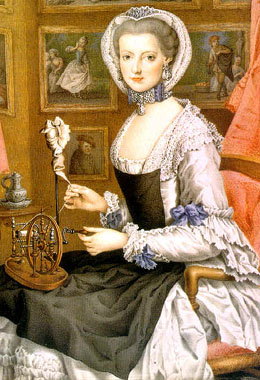 |
|
Marie Christine, selfportrait |
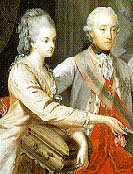 |
Marie Christine was the favorite daughter of Maria Theresia, because their birthday was on the same day. It was her only daughter, who was allowed to marry for love! All the others had to marry for political reasons. Christine had chosen one of her cousins, Albert Kasimir of Saxonia Teschen, 1742-1822. Although he was the son of a king, he was not in line for the throne. Therefore he had no political power.
Albert's mother was Maria Josepha, a sister-in law of Maria Theresia. Maria Josepha gave birth to 14 children and is buried in the royal church in Dresden, Germany. Her husband was August II., king of Poland, elector of Saxonia . |
Marie Christine and
Albert of Saxonia-Teschen |
However the glossful wedding of the couple in love took place after the death of Franz Stephan, because as an affectionate father he would have never agreed to this unpolitical marriage. They married in Schlosshof, a hunting palace in the Marchfeld, east of Vienna. Once Maria Theresia had required it from Prince Eugen of Savoyen.
Albert, the husband of "Mimi", how Marie Christine was called by her family and friends, received a position as a governor in Hungary befitting his new imperial rank. Both lived in Pressburg during the early years of their marriage. |
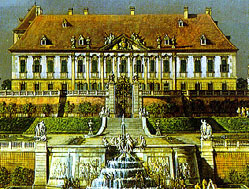 |
|
Marriage in Schloßhof |
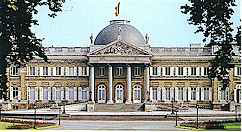 |
When Maria Theresia died, Marie Christine and Albert were both appointed as governors of the Netherlands. They became the successors of the deceased Karl of Lorraine (1780). In Brussels they built a palace called Laeken, which today still serves as the royal palace of the Belgian king's family. Marie Christine and Albert left Belgium in 1792 and returned to Vienna. |
| Residence in Brussel: Palace Laeken |
|
|
Marie Christine was a talented painter who made drawings using India ink. These drawings decorate the study of Maria Theresia, known as the porcelain room, in the summer palace, Schönbrunn.
She was very interested in art. She and her husband founded the largest copperplate engravings collection of the monarchy. They also collected drawings and etchings which were placed in their Viennese palace, called "Albertina". |
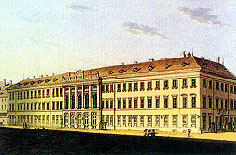 |
|
Residence in Vienna: Albertina, 1825 |
|
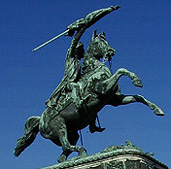
|
The marriage was very happy even though they lost a child right after its birth.
Later they adopted archduke Charles, who later won the war in which Napoleon was defeted. His monument stands at the Heldenplatz.
|
|
Adoptiv son Archduke Charles |
|
Marie Christine probably died of cholera. Who would have suspected that contaminated water would cause her death? Some years before she died, she planed a big project: a drinking water pipeline which would supply larger areas of the city with fresh water. After her death in 1798, her widower ,Albert, survived her by more than 20 years, completed her pipeline project.
The "Albertini Water Pipeline" as it was called, was the beginning of a solution to supplying Vienna with clean drinking water. The source of the water was in Hütteldorf, in the western part of Vienna, today the 14th district. In 1804 the pipeline was finished. The pipeline fed twelve public wells. One was the Isis-Fountain. This is the only cast-iron well in the city of Vienna (8th district, Albert place). The Egyptian goddess Isis, for which the well is named, sits at the top of the fountain. |
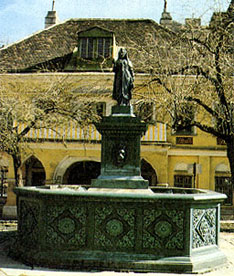 |
|
"Albertini water
pipeline"Isis-fountain,
set up 1834 |
Marie Christine is buried in the Imperial crypt. Her husband Albert commissioned Antonio Canova to design a grave-monument in the St. Augustin Church, a part of the Hofburg, winter residence.
▲
Link: Grave-monument
in St. Augustin Church (german)
January 2003 |
|
|